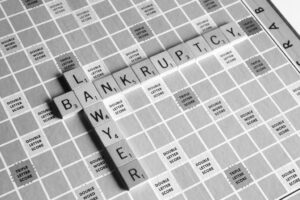A sudden illness or accident can do more than disrupt everyday life. It can wipe out savings, push families into debt, and create stress that feels impossible to escape. The cost of hospital stays, prescriptions, and follow-up care can multiply quickly. Many discover too late that insurance covers only part of the burden. For them, bankruptcy due to medical bills becomes the last remaining option. This article explores why medical debt is so widespread, what emotional weight it carries, and when bankruptcy turns from a distant thought into a necessary step.

Why bankruptcy for medical bills is more common than you think?
It is tempting to believe that most bankruptcies come from reckless spending. The reality is very different. Bankruptcy for medical bills is one of the leading causes of personal financial collapse in the United States. Even those with stable jobs and health insurance often face bills that outpace their income. A single surgery or prolonged treatment can equal the cost of a new home. Families that once felt secure quickly find themselves struggling to pay not only for care but also for rent and groceries. What was once unthinkable becomes the new reality.
The emotional and financial toll before filing for bankruptcy
Long before the paperwork begins, the human cost of debt shows itself. Calls from collectors interrupt family dinners. Credit cards fill up with charges that bring no relief. Parents lie awake at night wondering how to cover the next hospital invoice. The pressure builds, slowly but relentlessly. Choosing filing for bankruptcy is rarely a quick decision. It usually comes after months, even years, of carrying both the numbers and the fear that go with them. The exhaustion is not just financial, it is deeply emotional too.
Signs you may need to file for bankruptcy after medical debt piles up
There are warning signs that should not be ignored. When making only minimum payments barely changes the balance, the debt is winning. If you borrow from one card just to pay another, or if medical bills already exceed your yearly income, it is time to reassess. Sleepless nights and constant messages from collection agencies add to the weight. At this stage, deciding to file for bankruptcy does not mean giving up. It can be the first serious step toward protecting what is left and rebuilding stability.
Alternatives to bankruptcy for medical bills and when they fail
Most people try other paths first. Hospitals may offer payment plans. Charities sometimes step in. Negotiating with providers can lower some costs. These options help in certain cases, yet they are often not enough. Interest continues to grow. Wages may be at risk of garnishment. For some, every effort to resolve the issue feels like patching a sinking boat. Eventually, bankruptcy for medical bills becomes the only choice left, not because people did not try, but because the system leaves too few alternatives.
Making the decision: Bankruptcy due to medical bills as a fresh start
Reaching this point is never easy. Still, it can also be the beginning of a new chapter. Bankruptcy due to medical bills can erase debt, stop collectors, and let people focus on recovery without the daily fear of financial collapse. Credit scores may take a hit, but the relief of breathing freely again often outweighs that setback. For many, this step is not a failure. It is a deliberate move to clear the past and rebuild a future on firmer ground.


